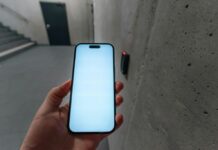
Mobile devices have emerged as an integral aspect of work in today’s digital environment, empowering employees with both flexibility and productivity. Mobile devices may include smartphones to laptops that employees use to stay connected, collaborate, and access corporate resources. But the extensive use of mobile devices has also brought many security challenges for organizations. The challenge for most companies is how to protect these devices without sacrificing productivity. The solution is to use the best suited security approach, and among the most talked ones are the Mobile Device Management (MDM) and Mobile Application Management (MAM).
MDM and MAM: What’s the Difference?
Both MDM and MAM provide mobile security, but they tackle the problem in distinct ways. MDM offers management of the entire device, MAM takes care of the applications on the device. Understanding the difference in these two definitions can greatly affect how an organization approaches security and safeguarding sensitive information. As Bring Your Own Device (BYOD) policies gain traction and mobile devices become increasing dependencies, understanding the difference between MDM and MAM is critical to optimizing mobile security.
What is Mobile Device Management (MDM)?
Mobile Device Management MDM is a security solution for managing, securing mobile devices. This generally pertains to devices owned by the company and used by employees for doing their work. MDM gives full control of the device itself within a controlled environment so IT admins can enforce security policies, track devices, and even wipe or lock a device in the event it’s lost or stolen. MDM enables organizations to enforce compliance of all devices with company security policies, including password enforcement, encryption, and remote access policies. But this MDM can become intrusive — particularly when staff use their personal device for work.
What is Mobile Application Management (MAM)?
Unlike MDM, which secures the whole device, Mobile Application Management (MAM) secures only the apps on a device. M)that lets organizations deploy, manage, and secure particular applications on employee- or company-owned devices. This is especially valuable in BYOD situations, which means employees use their own devices to access company assets. MAM, in turn, has a more privacy-appropriating choice because it allows employees to maintain their private (theirs) data (and apps) apart from the corporate (corporate) data (and applications). Using MAM, enterprises can manage security requirements like app-level encryption, authentication, and corporate app remote wipe without managing the remainder of the device.
MDM vs MAM: Which is the Right Choice for Your Organization?
MDM and MAM both have its benefits, and the right choice depends on the organization. For businesses that provide employees with company-owned devices, MDM is typically the better route. It provides greater control and guarantees that all devices are secured with advices from company policies. But MAM is the preferred solution for enterprises with BYOD policies or scenarios where you need to keep employee data private. MAM only secures the apps they use for work, and never looks at your personal data or apps.
How Hypori Enhances Mobile Security
One solution that blends the strengths of both MDM and MAM is Hypori. Hypori is a platform that helps businesses secure their mobile environments without compromising employee privacy. It allows organizations to provision a virtualized environment from which corporate applications can be accessed, corporate data is kept secure, and personal data remains private. Hypori’s mobile security solution permits enterprises to install corporate apps on personal devices, resulting in a better user experience and preventative security controls. Hypori thus provides the flexibility of MAM combined with the security capabilities often found with MDM.
Hypori Advantages Hypori Benefits
Hypori features critical benefits addressing the needs of organizations looking to secure their mobile workforce:
- Virtualized Apps are Secure: With Hypori, access to corporate applications is kept secure in a virtual environment, meaning that organizations can continue with their operations while ensuring data remains protected within the confines of the virtualized environment.
- Seamless User Experience: Employees can use personal devices for work without compromising privacy and security — Hypori keeps personal and corporate data separate.
- Miss Zhu said: “Hypori assists with regulatory compliance from mandates such as HIPAA and Gdpr.
Choosing the Right Mobile Security Strategy
With organisations increasingly adopting remote and hybrid working models, it is evident that mobile security is going to remain on the top of the priority list. With the increase in mobile devices and BYOD (bring your own device) policies, companies must implement comprehensive strategies to safeguard sensitive information while allowing corporate resources to be accessed safely. Regardless of whether organizations decide on MDM, MAM, or a combination of both, the aim is to provide a secure environment for a productive workforce that limits security threats.
When to Choose MDM
If an enterprise issues devices to its employees, MDM is the perfect solution. It allows IT admins complete control of the device, enabling them to track its activity, enforce policies, and verify data security standards. MDM is especially relevant for devices that contain sensitive corporate data, as it will enable businesses to maintain tight control of security settings.
When to Choose MAM
MAM is preferred where the organization has a BYOD policy or just in case the organization needs to secure the corporate app MAM is a MAM solution, so instead of focusing on protecting the device, it’s centered more on the approach of securing the apps, which is less intrusive compared to MDM and is more employee-friendly, especially in hybrid setups when things are doubtful for privacy. MAM is also particularly useful для businesses that need to give employees the flexibility to use their own devices for work while still feeling secure.
The Future of Mobile Security
Parting words, MDM and MAM are two different types of strategies that organizations can implement in order to increase security. MDM provides complete control over corporate-owned devices, which is a great fit for companies looking to secure every part of their mobile devices. On the other hand, MAM is ideal for businesses wanting to protect corporate apps on personal devices without compromising employee privacy. In contrast, solutions such as Hypori, provide a hybrid approach that secures both corporate and personal devices without compromising personal privacy or security. The right solution will ensure mobile environments stay secure and productive, whatever the device or OS.







